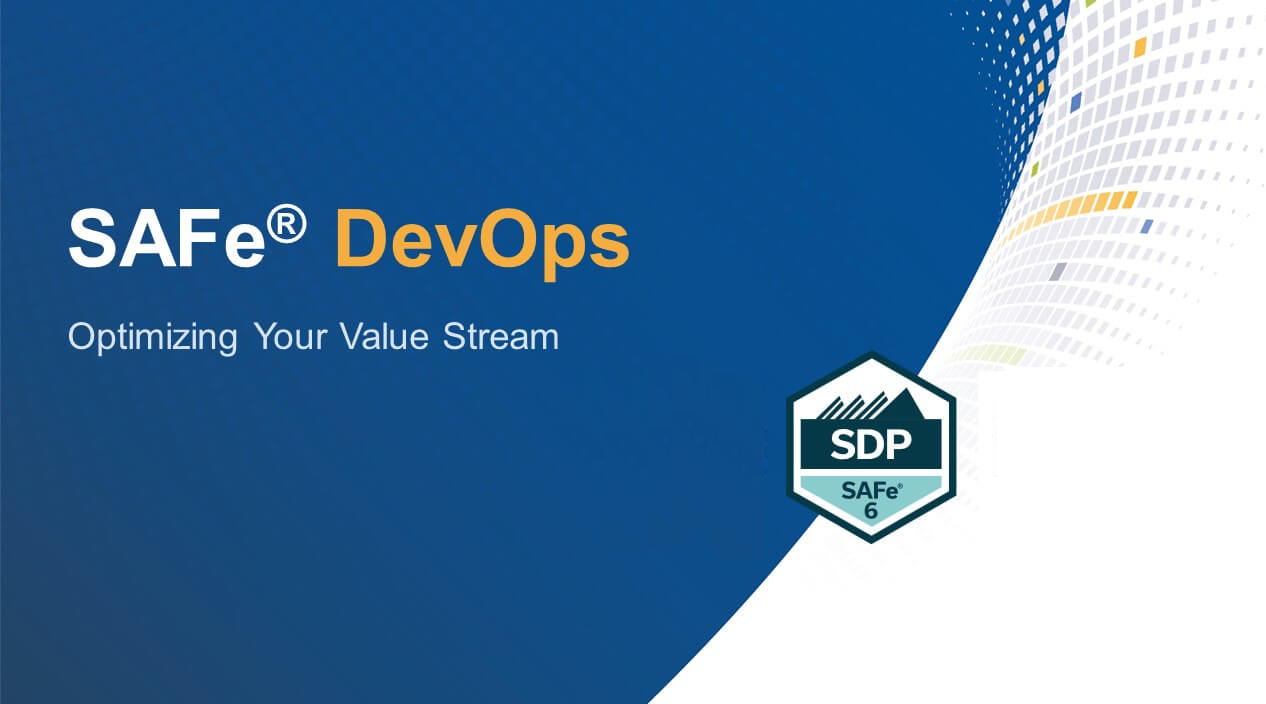
Overview of SAFe 6 DevOps
The SAFe 6 DevOps certification shows that you understand how to apply DevOps practices within the Scaled Agile Framework (SAFe). It helps you learn how to improve the way software is delivered using a method called CALMR, which stands for Culture, Automation, Lean Flow, Measurement, and Recovery.
This certification is great for people working on Agile teams, in product development, or managing infrastructure. As more companies look to bring DevOps into their Agile processes, having this certification can really help boost your career.
Exam Format and Requirements
- Total Questions: 45
- Question Type: Multiple-choice and multiple-response
- Time Limit: 90 minutes
- Passing Score: 73% (33 correct answers)
- Exam Language: English
- Delivery Mode: Web-based, closed book
The exam assesses your knowledge of DevOps practices in a SAFe environment, with particular focus on building, maintaining, and improving the delivery pipeline.
SAFe 6 DevOps Exam Topics
1. Applying the CALMR Approach
The CALMR model is foundational to SAFe DevOps. It represents:
- Culture: Shared responsibility and collaboration across teams
- Automation: Reducing manual effort in testing, integration, and deployment
- Lean Flow: Reducing bottlenecks and increasing throughput
- Measurement: Using data to guide improvements
- Recovery: Designing for failure and fast recovery
2. Designing a Continuous Delivery Pipeline
Understand how to design and implement a pipeline that supports:
- Continuous exploration
- Continuous integration
- Continuous deployment
- Release on demand
3. Managing DevOps Capabilities
Key topics include:
- Mapping current delivery pipelines
- Identifying and eliminating delays
- Aligning DevOps efforts with business goals
How to Prepare Using DumpsLink Resources
Practice with Updated PDF Dumps
DumpsLink provides verified SAFe 6 DevOps Exam Questions in downloadable PDF format. These files contain real exam-style questions and can be used offline, making it easy to review during travel or breaks.
Use the Online Exam Engine
In addition to PDFs, DumpsLink offers an SDP (6.0) online practice engine that simulates the actual exam interface. You can test yourself under timed conditions, track your results, and improve accuracy through repeated attempts.
Focus on Domain-Specific Learning
DumpsLink questions are organized by topic (e.g., CALMR, delivery pipelines, DevOps metrics), helping you target weak areas. This allows for focused preparation instead of random guessing.
Track Progress and Re-Test
Use DumpsLink reporting features to monitor your improvement and retake questions until your performance stabilizes above the passing score.
Be Exam-Ready with Real Exam Questions
The SAFe 6.0 DevOps certification isn’t just about learning the concepts, it tests how well you can apply DevOps in real situations using the SAFe framework. With the right study materials, like the SAFe 6 DevOps exam questions from DumpsLink, you can prepare confidently and pass the exam on your first try.
Real Sample SAFe 6 DevOps Exam Questions
| QUESTION: 1 |
| What is the desired frequency of deployment in SAFe? Option A: Continuous Option B: Daily Option C: Once per Iteration Option D: Once per PI |
| Correct Answer: A |
| Explanation/Reference: https://www.scaledagileframework.com/continuous-deployment/ |
| QUESTION: 2 |
| What is the primary purpose of creating an automated test suite? Option A: To enable continuous testing Option B: To eliminate all manual testing Option C: To increase unit test coverage during an Iteration Option D: To increase the return on investment for finding defects |
| Correct Answer: A |
| Explanation/Reference: https://www.scaledagileframework.com/continuous-integration/ |
| QUESTION: 3 |
| What should be measured in a CALMR approach to Devops? Option A: Flow, quality, and value Option B: Everything Option C: Mean time to restore Option D: Deployment frequency |
| Correct Answer: B |
| Explanation/Reference: https://www.scaledagileframework.com/calmr/ |
| QUESTION: 4 |
| What organizational anti-pattern does DevOps help to address? Option A: Too much focus on centralized planning Option B: Walls of confusion between customers and the business Option C: Organizations that makes decisions along functional lines Option D: Teams that are isolated and working within functional areas (e.g., business, operations, and technology) |
| Correct Answer: D |
| Explanation/Reference: https://www.scaledagileframework.com/devops/ |
